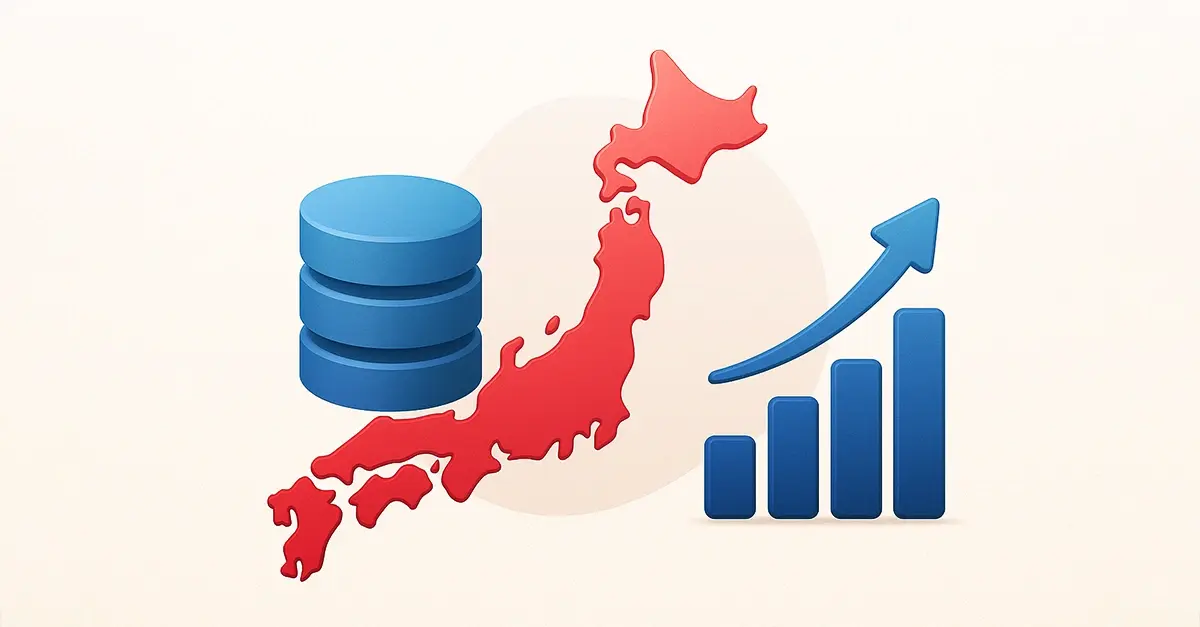What Is Firmographic Data?
Firmographic data is the foundation of effective B2B targeting. It provides structured information about companies, such as industry, size, location, and revenue, allowing go-to-market teams to prioritize the right accounts, personalize outreach, and improve segmentation.
In this guide, you'll learn what firmographic data includes, how it differs from other B2B data types, and why it remains critical for marketing, sales, and revenue operations.
So, what is firmographic data?
Firmographic data refers to the core characteristics used to describe and classify a business. Just as demographics help segment people, firmographics help segment organizations.
At its core, firmographic data answers questions like:
- What is this company?
- What industry is this company in?
- How large is it?
- Where is it located?
- What is its legal structure or operating status?
- Who the executives are?
- What's the official company language?
Large firmographic datasets may answer hundreds of such questions. These insights help teams sort companies into categories that align with business goals, go-to-market strategies, and campaign priorities.
Common Firmographic Data Attributes
While firmographic data can be expansive, most teams rely on a consistent set of attributes:
|
Attribute |
Description |
|
Industry |
What the company does, often defined by SIC or NACE codes |
|
Revenue |
Annual sales, either exact or estimated |
|
Headcount |
Number of employees or size classification (e.g., SMB) |
|
Location |
Headquarters address or region of operation |
|
Status |
Active, dissolved, merged, or undergoing changes |
|
Company Type |
Public, private, nonprofit, or subsidiary |
|
Incorporation Date |
When the company was founded or registered |
|
Ownership Structure |
Parent-subsidiary relationships or group linkage |
These attributes are used throughout marketing and sales systems to support targeting, scoring, compliance, and planning.
Why Firmographic Data Matters
Firmographic data gives teams a reliable way to filter the noise and focus only on accounts that fit specific criteria. Without it, you’re left with large, unqualified lead lists that waste time and budget.
Here’s why it’s considered foundational:
1. It Creates Clear Segmentation
Segmenting accounts by firmographics allows teams to create campaigns for specific industries, regions, or company sizes. Instead of blasting a message to thousands of businesses, you can create tailored content for mid-sized logistics firms in Germany or startups in the financial services space.
2. It Improves Lead Qualification
By combining firmographic data with behavioral or intent signals, teams can qualify leads faster. A lead from a software company with over 500 employees will likely have a different sales motion than a small agency with 10 staff. Firmographics allow this filtering to happen early in the funnel.
3. It Drives Account-Based Marketing
ABM requires precision. To build targeted lists for outbound or display advertising, firmographic data helps teams isolate only high-fit accounts. Without it, you're either targeting too broadly or missing key segments entirely.
4. It Supports Scalable Go-to-Market Strategy
When expanding into new verticals or regions, firmographic data offers visibility into market size and structure. You can analyze how many companies in a given region meet your ICP, and prioritize based on density or growth opportunity.
Firmographic Data vs. Demographics vs. Technographics
To avoid confusion, it helps to understand how firmographic data differs from other types of business intelligence data.
|
Data Type |
What It Describes |
Common Use Cases |
|
Firmographic |
Attributes of a company |
Segmentation, scoring, GTM planning |
|
Demographic |
Attributes of a person |
Persona building, email personalization |
|
Technographic |
Technology usage of a company |
Stack analysis, integration targeting |
Firmographic data tells you who the company is.
Demographics tell you who the contact is.
Technographics tell you what tools they use.
While all three are useful, firmographics are almost always the starting point for B2B segmentation and targeting.
Challenges Without Firmographic Data
Teams that lack access to reliable firmographic data often run into predictable problems:
- Poor segmentation leads to irrelevant messaging
- Incomplete CRM records reduce automation potential
- Scoring systems fail to prioritize pipeline effectively
- Campaigns waste budget on companies outside the ICP
- ABM programs rely on guesswork rather than data
Even small errors, such as wrong industry codes or outdated status, can lead to campaign waste or inaccurate reporting.
Sources of Firmographic Data
Not all firmographic data is created equal. Sources range from self-reported surveys to verified registries and third-party databases. Here are the most common categories:
- Public Registries: Chambers of commerce, VAT databases, government directories
- Commercial Databases: Aggregated datasets that standardize and structure firmographic attributes
- First-Party Data: Company information collected through web forms, onboarding workflows, or enrichment tools
- Web Scraping: Less reliable, often outdated or unverifiable
The most reliable firmographic data is structured, continuously refreshed, and built from traceable, compliant sources.
How B2B Teams Use Firmographic Data
Firmographic data becomes most valuable when integrated into real workflows. Whether it’s used to clean a CRM, qualify leads, or build a campaign audience, its role is to give teams clarity and structure in decision-making.
This section walks through how B2B teams use firmographic data across five essential functions: enrichment, scoring, segmentation, targeting, and compliance.
CRM Enrichment and Data Hygiene
CRMs lose value fast when the data inside is incomplete, inconsistent, or outdated. Firmographic data fixes this by filling in missing fields and creating structure across fragmented records.
When teams enrich CRM records with firmographic data, they can:
- Complete missing industry codes, revenue brackets, or employee count
- Standardize company names and classifications
- Remove inactive or duplicate companies
- Normalize records across regional teams or multiple systems
This helps marketing teams segment more effectively and enables sales to prioritize cleaner pipelines. Without firmographic enrichment, most automated workflows in platforms like Salesforce, HubSpot, or Marketo begin to break down.
Lead Scoring and Prioritization
Lead scoring helps revenue teams decide which contacts or accounts should be prioritized. While behavioral data (e.g., email opens, site visits) indicates interest, firmographic data establishes fit.
Scoring models often include firmographic rules such as:
- Revenue greater than $10 million
- More than 100 employees
- Located in North America or EMEA
- Belongs to a specific set of industries
- Active and independently owned
This ensures that teams don’t waste time on leads that will never convert due to company size, budget, or business model misalignment. Scores become more predictive, and handoffs from marketing to sales become more efficient.
Segmentation and Audience Building
Segmentation allows marketers to group companies into relevant categories for messaging, targeting, and reporting. Firmographic data powers this process by giving clear, filterable dimensions.
Example segments built using firmographic attributes:
- Active software companies with 200–500 employees in the United States
- Logistics firms in Western Europe with less than $20M in annual revenue
- Newly incorporated financial services companies in Canada
- Mid-market B2B service providers in urban areas
These segments can be used to personalize emails, build ad audiences, or analyze campaign performance by vertical or region.
Without structured firmographic segmentation, campaigns tend to default to generic messaging or overbroad targeting.
Account-Based Marketing (ABM)
ABM marketing depends on account-level precision. Firmographic data provides the core logic used to build high-fit target account lists.
Typical ABM workflows using firmographic data include:
- Building an initial TAM (total addressable market) by industry, size, and location
- Tiering accounts based on potential revenue or strategic fit
- Excluding companies outside coverage areas or below buying thresholds
- Matching campaign creatives to account segments
For example, a demand generation team may use firmographic filters to build a list of UK-based healthcare companies with more than 250 employees and no parent company. This list can then be used for display campaigns, outbound outreach, or personalized landing pages.
Firmographic accuracy is essential here. If even 10 percent of the list contains companies that are dissolved or misclassified, the campaign’s performance will suffer.
Campaign Personalization
Firmographic data is also useful in campaign content. It helps teams tailor their value proposition, messaging, and creative based on what is relevant to the recipient.
Examples of firmographic personalization:
- Referring to specific industry pain points in subject lines
- Showing localized case studies by region
- Offering product tiers aligned with company size
- Adjusting content formats for startups vs. enterprises
These personalizations don’t require complex AI. Even basic firmographic logic, like adding industry-relevant content blocks or segment-specific CTAs, can significantly improve engagement rates.
Regulatory and Compliance Filtering
In regulated industries, firmographic data supports risk filtering, governance, and privacy compliance. This includes:
- Verifying company status and location before initiating contact
- Ensuring entities meet criteria for Know Your Business (KYB) or AML checks
- Filtering companies that fall under regional regulations (e.g., GDPR, CCPA)
- Documenting how and why a company was added to a marketing list
This isn’t just about avoiding legal exposure. Clean firmographic filtering ensures that compliance doesn’t block outreach workflows or delay sales unnecessarily.
What Makes Firmographic Data Actionable?
Not all firmographic data is useful out of the box. For data to support these workflows, it must be:
- Structured: Available in a consistent schema with clearly labeled attributes
- Verified: Sourced from registries, government databases, or vetted commercial sources
- Updated: Refreshed frequently enough to reflect real-world changes
- Normalized: Presented in a format that works across systems and regions
- Compliant: Collected and stored in accordance with data privacy laws
When firmographic data checks these boxes, it becomes more than a list of companies. It becomes a dataset that drives precision across your revenue engine.
Common Pitfalls in Execution
Even with firmographic data in place, teams can make costly mistakes. Here are some issues to watch for:
- Over-relying on one attribute: Industry classification alone is not a targeting strategy
- Using outdated datasets: Stale records can increase bounce rates or hurt reputation scores
- Skipping validation: Inaccurate data can lead to false positives in scoring or ABM inclusion
- Ignoring local differences: Business definitions and legal structures vary by region
Firmographic data works best when used in combination with internal CRM insights, behavioral data, and manual validation where needed.
Using Firmographic Data Across Teams
The impact of firmographic data increases when different functions across the business work from the same source of truth. While marketing might use it to define campaign segments, sales operations apply it to routing logic, and compliance teams rely on it to validate entities before engagement.
Let’s look at how key roles apply firmographic data in daily decision-making.
For Marketing Leaders (CMOs)
CMOs need accurate segmentation to increase campaign performance and pipeline quality. Firmographic data helps define high-fit audiences, align creative with vertical pain points, and measure performance by region or company size.
Top uses include:
- Building ICP-aligned audience segments
- Powering industry-specific ad creative
- Prioritizing territories by business density
- Reducing waste in lead generation spend
Marketing teams also use firmographic filters to identify whitespace. For example, by mapping out which industry segments or regions are underpenetrated, they can refocus spend toward high-yield accounts.
For RevOps and SalesOps
Operations teams are responsible for the systems and processes that keep go-to-market teams efficient. Firmographic data supports workflows around lead scoring, pipeline routing, and CRM normalization.
Specific use cases include:
- Enriching inbound leads with company size and status
- Automating routing rules based on region or vertical
- Identifying duplicates and consolidating accounts
- Validating TAM and coverage by headcount or industry
For RevOps, having trusted firmographic data means fewer escalations, better lead conversion metrics, and reduced CRM clutter. It also improves forecasting accuracy by giving cleaner visibility into which types of accounts are moving through each stage of the funnel.
For Data Buyers and Product Managers
Those responsible for sourcing and integrating firmographic data care about structure, accuracy, and delivery. Their job is to ensure the right data flows into CRMs, analytics engines, and GTM platforms with minimal disruption.
Typical priorities:
- Schema compatibility and data format flexibility
- Refresh frequency and update cadence
- Geographic coverage and language support
- Transparency of source and compliance lineage
Data buyers are often the last gatekeeper before firmographic data is activated across the business. The right partner must deliver verified data that works out of the box, without requiring excessive post-processing.
What to Look for in a Firmographic Data Provider
If you’re evaluating firmographic data vendors, here are the qualities to prioritize:
1. Scale with Depth
Look for global coverage that doesn’t sacrifice granularity. Coverage of 200+ countries is not helpful if the data only includes high-level firm names and industries.
2. Structured and Standardized
The best datasets include consistent attributes like industry codes (SIC, NAICS, NACE), revenue bands, and legal status. Normalization across global formats is critical for international operations.
3. Verification and Refresh Rate
Daily or weekly updates are far more useful than quarterly refreshes. Data sourced from official registries and validated using proprietary logic ensures accuracy and integrity.
4. Flexibility in Delivery
Bulk files are still common, but modern teams need data through APIs, connectors, or custom schemas. A vendor should support ingestion into your exact GTM stack.
5. Compliance Readiness
Make sure the data is privacy-first and aligned with GDPR, CCPA, and other relevant standards. This is particularly important for enrichment processes that touch contact or company-level details.
Why Teams Choose InfobelPRO for Firmographic Data
Built for sales and marketing professionals who need verified, up-to-date firmographic data, InfobelPRO empowers teams to enrich their CRMs, target the right accounts, and ensure regulatory compliance.
With over 375 million company records and 460+ attributes per business, InfobelPRO delivers a global dataset optimized for real-world use. Whether you need to clean legacy CRMs, standardize ABM targeting, or power daily lead scoring workflows, the data is structured, flexible, and designed to support execution.
InfobelPRO’s firmographic dataset is:
- Sourced from 1100+ official and public records
- Verified using proprietary deduplication and validation logic
- Delivered via flat file or real-time API
- Built with GDPR and CCPA compliance at its core
- Semantically categorized for smart segmentation and precise filtering
- Trusted by major platforms and enterprise teams across Europe and beyond
Unlike legacy vendors offering black-box datasets or niche providers with limited scope, InfobelPRO combines accuracy, context, and usability - making it ideal for CMOs, RevOps teams, and data buyers alike.
Conclusion: Firmographic Data as a GTM Advantage
Firmographic data is more than a list of company attributes. It’s a tool that enables precision across your entire revenue engine. From segmentation to scoring, enrichment to compliance, it provides the structure that B2B teams need to scale without wasting time or budget.
To unlock the full value of firmographic data, you need more than a static spreadsheet. You need verified intelligence that fits your workflows, adapts to your growth, and keeps you compliant across regions.
InfobelPRO offers the structured, accurate firmographic data that high-performing teams depend on. Whether you’re launching ABM, cleaning your CRM, or mapping new markets, the right data turns strategy into execution.
Request a Free Audit of Your Firmographic Dataset
Ensure your firmographic data is accurate, complete, and fully aligned with your go‑to‑market strategy. Our team will review your dataset, identify gaps, and deliver actionable recommendations to enhance targeting, segmentation, and overall data quality. And we’ll do it entirely free. Book a free data audit HERE.





Comments